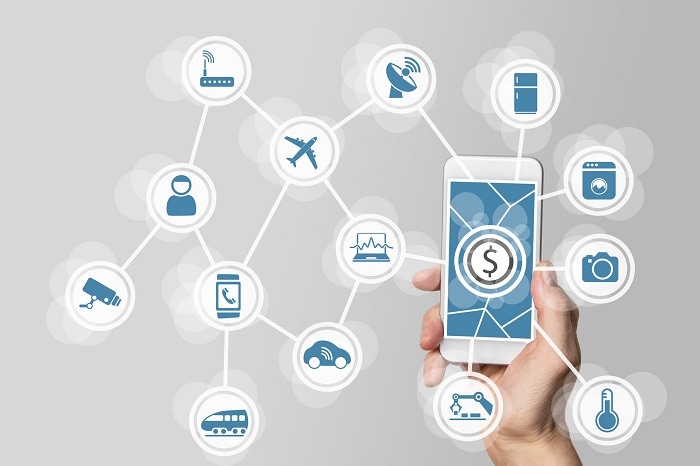With IoT destined to become the way of the future in our homes and businesses, it's important that providers build a strong infrastructure on the back end, because most devices in our world are not connected.
May 10, 2021

Telecoms.com periodically invites expert third parties to share their views on the industry’s most pressing issues. In this piece Liran Weiss, CCO at mce Systems, looks at the technological foundations required to make a success of IoT.
These days, we see an ever-increasing labeling of products as “smart this” or “smart that.” But where do these ill-defined, merchandisable monikers come from? The answer is IoT and its capacity to improve the network of applications and appliances we use in our daily lives to make everything seem “smart.” For every great new corner of the tech sector that boosts our lives is its underside, where the gears and clockwork make all the magic happen. With IoT destined to become the way of the future in our homes and businesses, it’s important that providers build a strong infrastructure on the back end, because most devices in our world are not connected.
Like any new technology that proves to serve us well, IoT is rapidly growing. The number of businesses using IoT almost doubled between 2014 and 2020, from 13 percent to 25, according to McKinsey. By 2023, the world is expected to have 43 billion devices IoT-connected. As for the market itself, by 2026, the global IoT market is expected to reach a value of USD 1,386.06 billion—up almost 200 percent from 2020, according to a Mordor Intelligence report.
IoT applications can cover almost any industry, notably automotive, healthcare, home appliances, manufacturing, and agriculture. And with the proven success of IoT in those applications, hundreds of companies are now rushing onto the field developing their solutions to help fill in the gaps where necessary. While the latest products are solving a variety of different issues likely to be faced by merchandisers and service providers, there are still important cogs in the IoT wheel that need to be understood and this lies in the IT.
To understand the fundamentals of IoT IT and all the moving parts, it’s best to approach the matter with the smart home example. Let’s use a kitchen setting, where our fridge is working in sync (pun unintended) with our dishwasher, or the TV. In another scenario, perhaps insurance companies want to best appraise the functionality of several appliances by monitoring their data. And behind all this stands the system that manages the entire operation, which comes in three layers that all network-connected devices require: connectivity, management, and diagnostics.
Connectivity entails offering the right software to ensure the connection between the devices remains constant and unencumbered, which can become rather complex considering devices from different manufacturers may need to operate seamlessly—a tall order if there ever was one. Connectivity is also where the device integration into the broader IoT network takes place.
Second is diagnostics, which encompasses maintenancing and ensuring the device runs at peak performance. Diagnostics solutions require on-site, on-device functionality assessment and regularly, without the need for a repairman’s visit. The more the on-device diagnostics function can assess without human intervention the higher the customer satisfaction will be and lower churn.
Tying both the connectivity and diagnostics together is device management, which gives automated directions to devices to function properly and in a synchronized fashion, all centralized in a singular command center to handle all touchpoints of all devices.
As the consumer demand for smart homes continues, companies will find all-encompassing solutions that address these three layers. Beyond the three layers, merchandisers offering IoT “smart home” systems will be required to manage the devices over a specific timeframe, from handling them immediately after manufacturing until disposal. This is what’s called lifecycle management. We can look at mobile device lifecycle management as examples of what already exists within the world of smartphones.
From setup through to repair, then to wiping a device clean, and disposing or repurposing, IoT lifecycle management requires a whole underbelly of IT management and organization. In the mobile device management industry, for example, this necessitates software that can manage all the different touchpoints in the lifecycle, including the potentially diverse set of devices. With mobile device lifecycle management only one device per customer requires connectivity, diagnostics, and management. IoT, however, requires several devices at once.
In addition to lifecycle management considerations, IoT merchandisers will need to do some soul searching in order to keep up with other updates in the telecoms sector, including 5G and cloud-based technologies. While 5G is expected to improve speed, it’s also expected to drive consumer behavior toward more actions that require higher bandwidth. Cloud-based systems will be necessary to enable the management of swathes of data generated as a result of the 5G wave, while also empowering telecoms to scale up.
The internet of things age is the next step for mobile devices, and only getting started. To be ready for the smart home craze, it’s best that vendor and provider IT departments be prepared, or risk being pulled under by the wave and face the consequences of their backend systems lagging behind.
 Liran is the CCO and co-founder of mce Systems, an omnichannel device lifecycle and automation solutions boutique. With a B.Sc. in computer science and physics from Israel’s Ben Gurion University and over 15 years of experience in mobile communications and dealing with global carriers, Liran became an international pre-sale guru at Emblaze Mobile and later founded mobile solutions software company eRocki, followed by mce Systems. On the side, Liran is an avid yogi, having studied Vijnana Yoga for three years, and is a dedicated husband and father to three adorable kids.
Liran is the CCO and co-founder of mce Systems, an omnichannel device lifecycle and automation solutions boutique. With a B.Sc. in computer science and physics from Israel’s Ben Gurion University and over 15 years of experience in mobile communications and dealing with global carriers, Liran became an international pre-sale guru at Emblaze Mobile and later founded mobile solutions software company eRocki, followed by mce Systems. On the side, Liran is an avid yogi, having studied Vijnana Yoga for three years, and is a dedicated husband and father to three adorable kids.
Read more about:
DiscussionAbout the Author(s)
You May Also Like








.png?width=300&auto=webp&quality=80&disable=upscale)


_1.jpg?width=300&auto=webp&quality=80&disable=upscale)


.png?width=800&auto=webp&quality=80&disable=upscale)